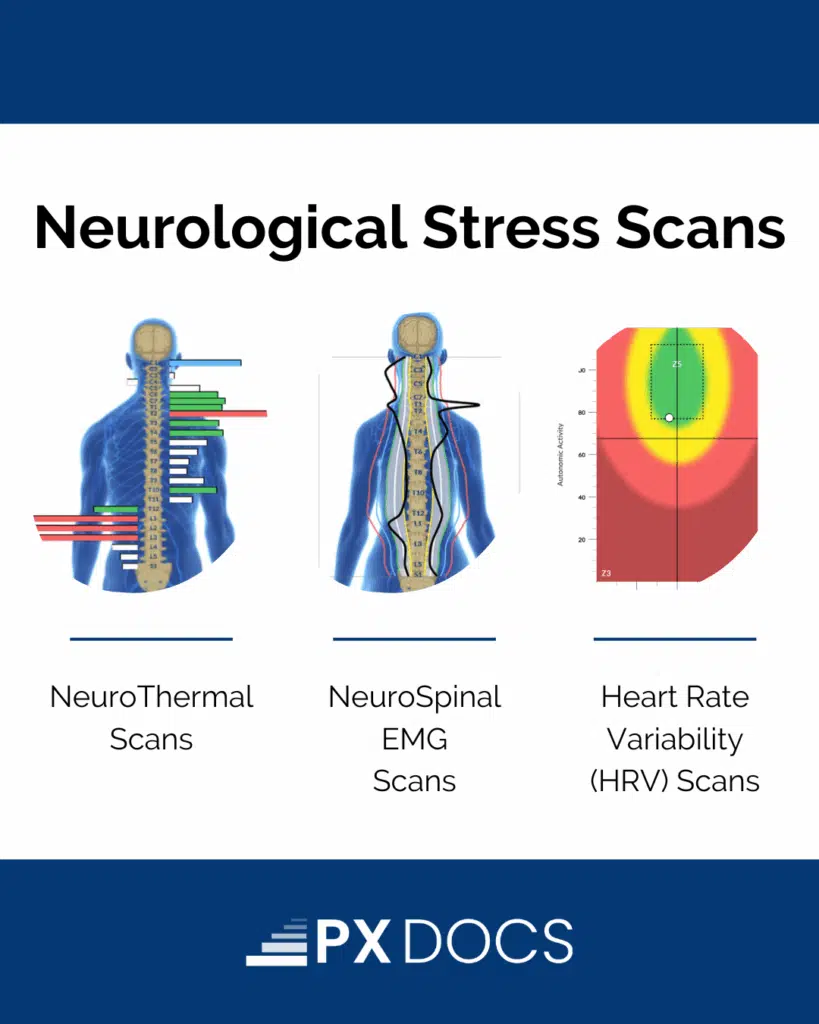“My child just isn’t themselves… but no one can really tell me why.”
If you’ve ever thought that — watching your child struggle with anxiety, meltdowns, tummy troubles, or sleep challenges — you’re not alone. And you’re not imagining it.
These signs often stem from an underlying problem that’s becoming increasingly common in our modern world: a dysregulated nervous system. And according to studies, nearly 1 out of 6 children today is suffering from the effects of nervous system dysregulation.
Today’s kids are under more stress than ever before. From the moment they’re born, their nervous systems are bombarded — by birth interventions, toxins, processed foods, screens, and overstimulation. The result? A rising wave of kids stuck in survival mode — anxious, dysregulated, and constantly overwhelmed.
Here’s the problem: most doctors and therapists — even well-meaning functional practitioners — aren’t assessing or addressing the nervous system at all. Instead, families are either sent to different specialists for each symptom — one for anxiety, another for digestion, someone else for behavior — or they’re given a plan that focuses almost solely on the gut and supplements.
But very few are asking the most important question: how is your child’s nervous system functioning? Because when it’s stuck in stress mode, everything else — gut health, immune function, emotions, and focus — starts to break down.
And here’s the good news: there’s a way out.
In this article, we’ll unpack the signs of nervous system dysregulation, explore the vagus nerve connection, and show you how Neurologically-Focused Chiropractic Care helps calm the chaos at the source — so your child can finally shift from survival mode to thriving.
Because your child was born to thrive — not just cope. And it’s not too late to get them there.
Understanding Chronic Nervous System Dysregulation
To grasp why so many children struggle with nervous system imbalances, it’s essential to understand the intricate dance of the Autonomic Nervous System (ANS). This system controls all of our involuntary functions, from breathing and heart rate to digestion and immune response.
The ANS is composed of two main branches:
- The Sympathetic Nervous System (SNS), often referred to as our “fight or flight” response
- The Parasympathetic Nervous System (PNS), known as our “rest and digest” mode
Imagine these two branches as the gas and brake pedals in a car. The sympathetic system revs us up when we perceive a threat, while the parasympathetic system slows us down when it’s time to relax and recover. In a well-regulated nervous system, these two work together seamlessly to maintain balance and adapt to life’s challenges.
However, when this delicate balance gets thrown off, the nervous system falls into dysregulation—a state where the stress side (SNS) stays “on” and the calming side (PNS) struggles to keep up. For many children, this dysregulation doesn’t come out of nowhere. It builds through what we call the “Perfect Storm” of stressors that pile up and overwhelm their developing nervous system.
So, what causes this “Perfect Storm?” It often begins before a child is even born, with maternal stress during pregnancy. Research shows that high levels of cortisol and other stress hormones can alter the developing fetus’s development, priming it for hypersensitivity down the road.
But perhaps the most overlooked and impactful factor is birth trauma. Even what many consider a “normal” delivery places a tremendous amount of force and pressure on a newborn’s head, neck, and brain stem. When you add interventions such as forceps, vacuum extraction, or C-section, those forces can multiply—leaving behind subluxation that immediately disrupts nervous system function.
Subluxation is far more than just a physical or structural issue – it is neurological interference that disrupts the function, regulation, and adaptability of the nervous system.
When it comes to kids’ health struggles today, parents are often pointed toward diagnoses, medications, and therapies—yet one of the biggest contributors to nervous system dysregulation is almost always left out of the conversation: subluxation. This hidden stress on the nervous system keeps kids stuck in “fight or flight” mode, unable to access the parasympathetic healing and regulation they so desperately need.
As infants grow into toddlers and young children, additional stressors like processed foods, environmental toxins, overuse of antibiotics, and emotional upheavals may lead to dysregulation. This keeps the SNS stuck in overdrive. Without the calming influence of a well-functioning PNS, the body and brain remain in a state of high alert.
Over time, this chronic imbalance takes a toll on every aspect of a child’s well-being. It sets the stage for a wide range of physical, emotional, and behavioral signs that can leave both kids and parents feeling overwhelmed and out of control.
Signs of a Dysregulated Nervous System
When a child’s nervous system is stuck in a state of hyperarousal, it can manifest in a wide range of signs that affect every aspect of their daily life. As a parent, you may have noticed some of these signs without realizing they were connected to an underlying imbalance.
Physical signs are often some of the first red flags. These can include:
- Chronic fatigue and low energy levels despite getting enough sleep
- Frequent headaches or stomachaches
- Muscle tension and pain, especially in the neck and shoulders
- Digestive issues like chronic constipation, diarrhea, or acid reflux
- Difficulty falling or staying asleep, or waking up feeling unrefreshed
- Gross and fine motor developmental delays
- Frequent illnesses with a reduced ability to fully recover or “kick” them.
On an emotional level, a child with a dysregulated nervous system may struggle with:
- Anxiety and worry, often about things that seem minor to others
- Mood swings and irritability, with frequent meltdowns or tantrums
- Difficulty regulating emotions, especially in response to stress or change
- Low frustration tolerance and a short fuse for anger
Behavioral signs can range from:
- Hyperactivity and impulsivity, often misdiagnosed as ADHD
- Difficulty sitting still or focusing on tasks
- Extreme shyness or withdrawal from social situations
- Aggression or defiance, especially when feeling overwhelmed
Cognitively, a child may experience:
- Brain fog and difficulty concentrating
- Forgetfulness and poor short-term memory
- Struggles with executive functioning skills like planning and organization
- Difficulty processing and retaining new information
It’s crucial to understand that these signs don’t reflect a child’s character or intelligence. They indicate that their nervous system needs support. A child who appears reactive or withdrawn and is not misbehaving intentionally may be in survival mode. These signs can greatly impact a child’s quality of life, affecting relationships, academic performance, and overall well-being, leading to struggles with friendships, school demands, and enjoyable experiences.
As a parent, it can be heartbreaking to watch your child suffer and not know how to help. But by recognizing these signs for what they are, you can begin to take steps toward healing and restoration. With the right support and interventions, it is possible for your child to find their way back to balance and thrive.
The Vagus Nerve Connection
If there’s one part of the nervous system most kids today desperately need working better, it’s the parasympathetic system—the “rest, regulate, and digest” mode that’s supposed to keep their body calm, balanced, and healing. Unfortunately, in today’s stressed-out world, we see this system running on empty in so many kids, leaving them stuck in overdrive and unable to recover.
Imagine your child’s nervous system as a control tower at a busy airport, coordinating hundreds of incoming and outgoing messages every second. The vagus nerve is one of the most important “flight paths” in that tower—a long, wandering nerve that stretches from the brainstem down to the abdomen. It’s the main communication line between the control tower (the brain) and all the key systems of the body, directing everything from digestion and heart rate to emotional regulation and immune defenses.
When this powerful nerve is firing on all cylinders, it helps your child stay calm, regulate emotions, digest food efficiently, and bounce back from stress. But when the vagus nerve is underactive or out of sync (vagus nerve dysfunction)—a common issue in kids with a dysregulated nervous system—it’s like air traffic control losing its connection. Messages get delayed or lost, and critical systems can’t coordinate properly. This can lead to digestive struggles, frequent sickness, emotional outbursts, anxiety, and challenges with social connections. In short, the “rest, regulate, and digest” mode your child needs most simply can’t turn on when it’s needed.
The Link Between Dysregulation and Other Disorders
Just because your child has a specific diagnosis—whether it’s autism, ADHD, anxiety, POTS, or any other condition—doesn’t mean nervous system dysregulation isn’t a major piece of the puzzle. In fact, many chronic health and developmental challenges are worsened when the brain and nervous system are stuck in a constant state of stress, unable to shift into the calm, connected mode needed for healing, learning, and growth.
Addressing nervous system dysregulation doesn’t replace a diagnosis (though we’ve seen many kids drop a diagnosis after appropriate nervous system care), but it can dramatically improve how your child feels, functions, and thrives within it. When the nervous system is regulated, the body is better equipped to adapt, recover, and reach its fullest potential—no matter the label.
Here are a few examples:
Autism Spectrum & Sensory Processing Disorders
Children with Autism Spectrum Disorder (ASD) or Sensory Processing Disorder often show some of the clearest signs of nervous system dysregulation. When the brain stays stuck in “fight-or-flight,” sensory sensitivities intensify, transitions become harder, and developmental progress can stall. These challenges are on the rise in today’s generation, making it more important than ever to address the root cause.
Anxiety, Depression & Other Mood Disorders
When the nervous system is constantly on high alert, the body remains locked in sympathetic overdrive. This chronic stress response can contribute to the onset—and worsening—of anxiety, depression, and other mood-related struggles, making emotional regulation nearly impossible for a child.
ADHD
For many children with ADHD, dysregulation makes it harder for the brain to shift gears, pay attention, and follow through on tasks. A stressed nervous system often prioritizes scanning for danger over staying focused, driving impulsivity, restlessness, and inconsistent performance.
POTS (Postural Orthostatic Tachycardia Syndrome)
In POTS, a dysregulated autonomic nervous system struggles to manage heart rate and blood pressure when a child stands or changes position. This can cause dizziness, fatigue, brain fog, and exercise intolerance—further limiting daily activity and confidence.
PANDAS
Pediatric Autoimmune Neuropsychiatric Disorders Associated with Streptococcal infections (PANDAS) can trigger sudden and intense changes in behavior, mood, and motor skills. When the nervous system balance is already compromised, these immune responses can be magnified, leading to even more severe symptoms.
…And More
From chronic inflammation, immune challenges, and sleep disturbances to digestive struggles, constipation, and recurring ear infections—a dysregulated nervous system can be the “hidden link” connecting a wide range of your child’s challenges. The good news? Restoring balance to the nervous system and repairing it can set the stage for healing, regulation, and resilience.
Natural Techniques for Nervous System Regulation
When it comes to helping a child with a dysregulated nervous system, there are many natural techniques that can be incredibly helpful.
These approaches don’t necessarily repair the nervous system at its core, but they can go a long way in calming things down, improving regulation, and making daily life more manageable in the moment.
They provide valuable support by easing the stress response and helping the body find moments of balance — which is an important first step on the healing journey
One of the most powerful tools for nervous system regulation is vagus nerve stimulation. The vagus nerve is like the body’s “reset button”—when it is activated, it sends a message to the brain to shift out of “fight or flight” mode and into a state of relaxation.
Here’s how to stimulate the vagus nerve at home with some simple tricks, including:
- Deep breathing: Encourage your child to take slow, deep breaths into their belly, imagining a balloon expanding and contracting with each inhale and exhale. This activates the diaphragm and stimulates the vagus nerve.
- Cold water therapy: Splashing cold water on the face, taking a cold shower, or even just dipping the feet in cold water can be a quick way to “shock” the system out of a stressed state. The vagus nerve responds to this sudden temperature change by increasing parasympathetic activity.
- Humming and singing: The vagus nerve is connected to the vocal cords, so making these sounds can actually stimulate the nerve and promote relaxation. Encourage your child to hum their favorite tune or even just make silly sounds together!
- Limbic system retraining: Techniques like meditation and yoga can help to calm the limbic system and promote a sense of grounding and safety. Encourage your child to take a few minutes each day to sit quietly, focus on their breath, and observe their thoughts and feelings without judgment.
It’s also important to take a look at your child’s environment and lifestyle for hidden stressors that may be contributing to their nervous system dysregulation. Some common culprits include:
- Noise pollution: Loud, chaotic environments can overstimulate a sensitive nervous system. Consider using noise-cancelling headphones or creating a quiet, calming space in your home.
- Visual clutter: A messy, disorganized environment can be overwhelming for the brain. Help your child declutter their space and create a sense of order and calm.
- Screen time: The blue light from electronic devices can interfere with sleep and contribute to overstimulation. Set clear boundaries around screen time, especially before bed.
- Stressful relationships: Negative or toxic relationships can be a major source of chronic stress for children. Encourage open communication and help your child set boundaries with difficult people in their life.
- Proper Sleep: Finally, don’t underestimate the power of good old-fashioned sleep and rest. When the body is well-rested, it is much better equipped to handle stress and regulate the nervous system. Prioritize a consistent sleep schedule, create a relaxing bedtime routine, and encourage plenty of downtime and unstructured play.
It’s important to note that while these natural strategies can absolutely help take the edge off and provide short-term improvements in the moment, many parents eventually find themselves frustrated because the results don’t last or never go quite deep enough. They see some progress — maybe better sleep for a week, fewer meltdowns for a short time, or slight improvements in digestion — but the bigger challenges remain.
That’s because these supportive techniques can help regulate from the outside in, but they don’t truly repair the underlying nervous system dysregulation that’s driving the struggles in the first place. For lasting change, we have to go deeper and address the root cause: a stressed, subluxated nervous system that has lost its ability to adapt and self-regulate.
The PX Docs Approach of Neurologically-Focused Chiropractic Care
While the natural techniques we’ve discussed can be incredibly helpful for regulating the nervous system, sometimes a child needs a little extra support to truly thrive. This is where Neurologically-Focused Chiropractic Care comes in.
Deeper nervous system repair is often necessary when it comes to addressing more chronic health challenges and neurodevelopmental disorders. It’s not just about managing symptoms on the surface—it’s about going to the root and restoring function. Think of it like fixing the “wiring” in a house so the entire electrical system can run properly. When the wiring is repaired and working as it should, everything else connected to it can finally function the way it was designed to.
But because medical professionals have little to no understanding of how to actually measure, track, and improve neurological function and health, most patients suffering from a dysregulated nervous system end up struggling for years before finally finding answers and natural, drug-free solutions like those that the Neurologically-Focused Chiropractors in our PX Docs Network offer.
PX Docs chiropractors are specially trained to identify and address the underlying imbalances in the nervous system that contribute to dysregulation.
One of the key tools they use to do this is the INSiGHT scanning technology. These advanced scans provide a detailed look at the function of the nervous system, allowing chiropractors to pinpoint areas of dysfunction with incredible precision.
There are three main types of INSiGHT scans:
- Thermal scans: These scans measure temperature differences along the spine, which can indicate areas of inflammation and Autonomic Nervous System imbalance.
- Surface electromyography (sEMG) scans: These scans measure electrical activity in the muscles, helping to identify areas of tension and dysfunction.
- Heart rate variability (HRV) scans: These scans measure the balance between the sympathetic and Parasympathetic Nervous Systems, providing valuable insight into a child’s overall state of regulation.

With this objective data, PX Docs chiropractors can create a highly personalized care plan that addresses a child’s unique needs. This plan typically includes a series of adjustments designed to remove subluxation, repair nervous system function, and improve health, adaptability, and resilience within your child.
Once the nervous system is truly repaired and functioning the way it was designed, that’s when the real breakthroughs begin. The same regulation techniques, therapies, and natural supports that once seemed to only scratch the surface suddenly start working so much more effectively. Instead of constantly “pushing against the grain” of a stressed and stuck nervous system, your child’s body can finally respond, adapt, and heal. It’s like flipping a switch — therapies that once stalled now accelerate progress, nutritional changes make a bigger impact, and emotional regulation tools actually stick. In other words, repairing the nervous system doesn’t replace other approaches (though you may need fewer of them); it makes them finally work the way parents hoped they would all along.
The Path Forward for Your Child’s Nervous System Healing
If you’ve made it this far, you now have a deep understanding of what it means to have a dysregulated nervous system—and, more importantly, what you can do about it. You’ve learned about the vagus nerve, the power of natural techniques like vagus nerve stimulation and limbic retraining, and the transformative potential of Neurologically-Focused Chiropractic Care.
But perhaps the most important thing you’ve gained is a sense of hope that your child’s symptoms are not a life sentence, but a temporary manifestation of an underlying imbalance that can be corrected. Hope that there are safe, effective, drug-free solutions available. And hope that, with the right support and guidance, your child can experience the vibrant, thriving life they deserve.
At PX Docs, we are passionate about empowering parents and children on this journey of healing. We know that navigating the world of nervous system dysregulation can be overwhelming, confusing, and, at times, downright scary. But we also know that you are not alone—and that there is a path forward.
If you suspect that your child may be struggling with a dysregulated nervous system, we invite you to take the first step today. Visit our directory to find a PX Docs chiropractor near you who is trained in the latest techniques and technologies for supporting nervous system health.





